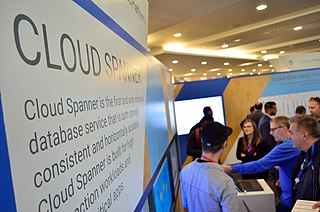 W
WActivityPub is an open, decentralized social networking protocol based on Pump.io's ActivityPump protocol. It provides a client/server API for creating, updating, and deleting content, as well as a federated server-to-server API for delivering notifications and content.
 W
WA botnet is a number of Internet-connected devices, each of which is running one or more bots. Botnets can be used to perform Distributed Denial-of-Service (DDoS) attacks, steal data, send spam, and allow the attacker to access the device and its connection. The owner can control the botnet using command and control (C&C) software. The word "botnet" is a portmanteau of the words "robot" and "network". The term is usually used with a negative or malicious connotation.
 W
WCockroach Labs is a computer software company that develops commercial database management systems. It is best known for CockroachDB, which has been compared to Google Spanner. CockroachDB is a project that is designed to store copies of data in multiple locations in order to deliver speedy access. It is described as a scalable, consistently-replicated, transactional datastore.
 W
WDistributed Data Management Architecture (DDM) is IBM's open, published software architecture for creating, managing and accessing data on a remote computer. DDM was initially designed to support record-oriented files; it was extended to support hierarchical directories, stream-oriented files, queues, and system command processing; it was further extended to be the base of IBM's Distributed Relational Database Architecture (DRDA); and finally, it was extended to support data description and conversion. Defined in the period from 1980 to 1993, DDM specifies necessary components, messages, and protocols, all based on the principles of object-orientation. DDM is not, in itself, a piece of software; the implementation of DDM takes the form of client and server products. As an open architecture, products can implement subsets of DDM architecture and products can extend DDM to meet additional requirements. Taken together, DDM products implement a distributed file system.
 W
WHPCC, also known as DAS, is an open source, data-intensive computing system platform developed by LexisNexis Risk Solutions. The HPCC platform incorporates a software architecture implemented on commodity computing clusters to provide high-performance, data-parallel processing for applications utilizing big data. The HPCC platform includes system configurations to support both parallel batch data processing (Thor) and high-performance online query applications using indexed data files (Roxie). The HPCC platform also includes a data-centric declarative programming language for parallel data processing called ECL.
 W
WMovim is a distributed social network built on top of XMPP, a popular open standards communication protocol. Movim is a free and open source software licensed under the AGPL. It can be accessed using existing XMPP clients and Jabber accounts.
 W
WParallel computing is a type of computation where many calculations or the execution of processes are carried out simultaneously. Large problems can often be divided into smaller ones, which can then be solved at the same time. There are several different forms of parallel computing: bit-level, instruction-level, data, and task parallelism. Parallelism has long been employed in high-performance computing, but has gained broader interest due to the physical constraints preventing frequency scaling. As power consumption by computers has become a concern in recent years, parallel computing has become the dominant paradigm in computer architecture, mainly in the form of multi-core processors.
 W
WPump.io is a general purpose activity streams engine that can be used as a federated social networking protocol which "does most of what people really want from a social network". Started by Evan Prodromou, it is a follow up to StatusNet; Identi.ca, which was the largest StatusNet service, switched to pump.io in June 2013.
 W
WReo is a domain-specific language for programming and analyzing coordination protocols that compose individual processes into full systems, broadly construed. Examples of classes of systems that can be composed with Reo include component-based systems, service-oriented systems, multithreading systems, biological systems, and cryptographic protocols. Reo has a graphical syntax in which every Reo program, called a connector or circuit, is a labeled directed hypergraph. Such a graph represents the data-flow among the processes in the system. Reo has formal semantics, which stand at the basis of its various formal verification techniques and compilation tools.
 W
WSimGrid is a toolkit that provides core functionalities for the simulation of distributed applications in heterogeneous distributed environments. The specific goal of the project is to facilitate research in the area of parallel and distributed large scale systems, such as Grids, P2P systems and Cloud. Its use cases encompass heuristic evaluation, application prototyping or even real application development and tuning.
 W
WSpanner is a NewSQL database developed by Google. Spanner is a globally distributed database service and storage solution. It provides features such as global transactions, strongly consistent reads, and automatic multi-site replication and failover.
 W
WTox is a peer-to-peer instant-messaging and video-calling protocol that offers end-to-end encryption. The stated goal of the project is to provide secure yet easily accessible communication for everyone. A reference implementation of the protocol is published as free and open-source software under the terms of the GNU General Public License (GPL) version 3 or later.
 W
WTwister is free software for experimental peer-to-peer microblogging. Being completely decentralized means that no one is able to shut it down, as there is no single point to attack. The system uses end-to-end encryption to safeguard communications. It is based on both BitTorrent and Bitcoin-like protocols and is considered a (distributed) Twitter clone.